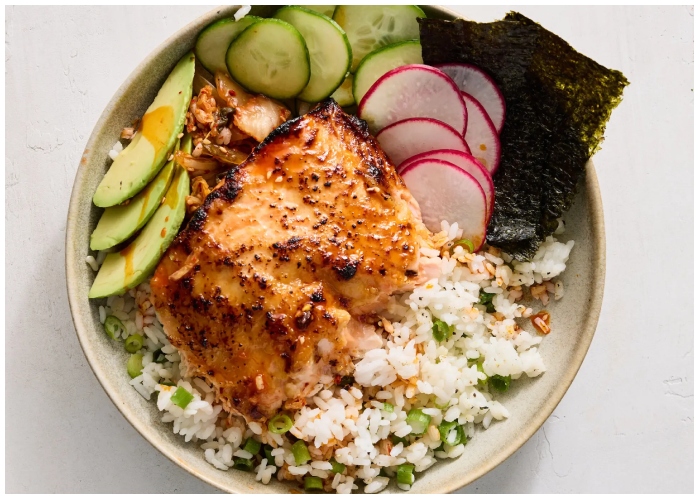In 2025, the idea of eating healthy has evolved beyond calorie counting and restrictive diets. Today, it’s all about color, variety, and nourishment. From rainbow-colored smoothie bowls to vibrant salads loaded with superfoods, people are focusing on whole, natural, and colorful foods that not only fuel the body but also support long-term wellness.
With social media full of visually stunning meal ideas and grocery aisles now brimming with better-for-you options, eating well has never looked more exciting—or more accessible. Here’s why whole, colorful foods are leading the way in healthy eating this year, and how you can bring them to your plate too.
What Are Whole, Colorful Foods?
Whole foods are ingredients that are as close to their natural state as possible. They haven’t been overly processed or stripped of their nutrients. Think fresh fruits, vegetables, whole grains, nuts, seeds, beans, and lean proteins.
Colorful foods, on the other hand, are exactly what they sound like—foods that come in a variety of natural colors. Red strawberries, green spinach, purple cabbage, orange carrots, yellow squash, and more. The more colors you eat, the more diverse your nutrient intake becomes.
This approach to eating isn’t just about aesthetics—it’s backed by science. Each color typically reflects a unique set of vitamins, minerals, and antioxidants. For example, red foods like tomatoes contain lycopene, a compound that supports heart health. Dark greens like kale and spinach are high in iron and fiber. Blueberries and purple sweet potatoes are packed with brain-boosting anthocyanins.
Why People Are Shifting to Whole Food Choices
The shift toward whole, colorful foods isn’t just about trends—it’s also a response to how people feel. After years of fast food, fad diets, and processed snacks, many are noticing that their energy, digestion, and mood suffer from poor nutrition. Whole foods, on the other hand, tend to leave people feeling more energized, satisfied, and balanced.
Here are a few reasons why people are turning away from highly processed items and embracing whole-food-based meals:
- Fewer Chemicals, More Nutrients: Processed foods often contain preservatives, additives, and artificial flavors. Whole foods provide the body with real nutrients it knows how to use.
- Better Digestion: Whole foods are rich in fiber, which supports a healthy gut, reduces bloating, and promotes regular digestion.
- Sustainable Energy: Instead of the sugar crashes that come from refined carbs, whole foods provide long-lasting fuel that keeps energy levels stable throughout the day.
- Improved Mood and Focus: Nutrient-dense foods are tied to brain health and emotional well-being. Omega-3s, magnesium, and antioxidants can improve mental clarity and reduce feelings of stress.
How Social Media Helped Make Healthy Eating Fun Again
One unexpected driver behind the colorful eating movement? Social media. Platforms like Instagram, TikTok, and Pinterest have turned healthy food into a visual art form. Influencers, chefs, and everyday food lovers now share recipes that are not only nutritious but also visually stunning.
Colorful bowls of quinoa, topped with avocado roses, edible flowers, and vibrant dressings, have become viral favorites. But the deeper message is clear: eating healthy doesn’t have to be boring. In fact, the more colorful your plate, the more enjoyable the meal.
This fun, expressive take on food has encouraged more people—especially younger generations—to get into the kitchen, experiment with produce, and ditch the myth that healthy eating is bland.

Making the Shift at Home
You don’t need fancy tools or expensive ingredients to embrace this approach. Here’s how anyone can start eating more whole, colorful foods today:
- Shop the Perimeter: In most grocery stores, whole foods are found along the outer edges—produce, meats, dairy, and grains—while the inner aisles contain more processed items.
- Add, Don’t Subtract: Instead of focusing on what to cut out, think about what to add in. More greens. More color. More variety.
- Try One New Item Weekly: Each week, pick a new fruit, vegetable, or whole grain to try. This keeps meals exciting and naturally boosts your nutrient intake.
- Make It Visual: Build meals that are visually appealing. A colorful plate isn’t just pretty—it usually means it’s more nutritious, too.
- Prep in Advance: Having chopped veggies, cooked grains, and proteins on hand makes it easier to throw together quick and healthy meals, even on busy days.
Healthy eating in 2025 emphasizes balance, variety, and enjoyment of whole, colorful foods. This approach makes nutritious meals satisfying and beneficial for long-term health.